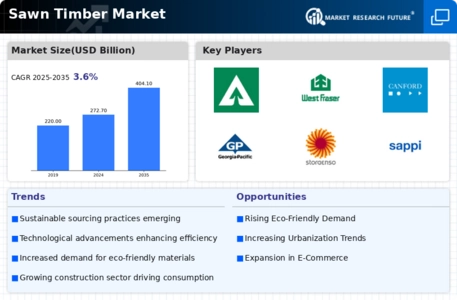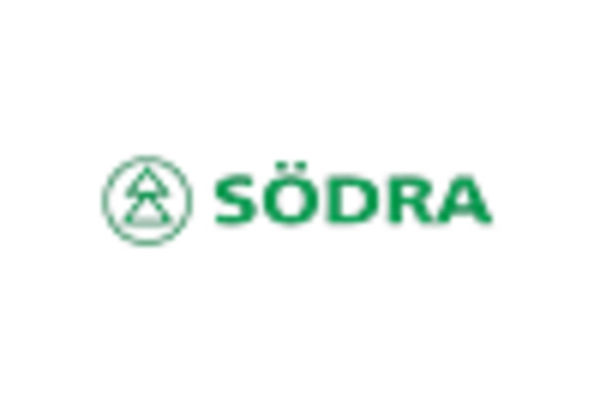Urbanization Trends
Urbanization continues to drive the Sawn Timber Market, as rapid population growth in urban areas necessitates the construction of residential and commercial buildings. In 2025, it is estimated that urban areas will house over 55% of the world's population, leading to heightened demand for construction materials, including sawn timber. This trend is particularly pronounced in developing regions, where infrastructure development is accelerating. The construction sector's reliance on timber for framing, flooring, and finishing is likely to sustain the market's growth. Additionally, urban planners are increasingly incorporating timber into their designs due to its aesthetic appeal and sustainability credentials. As cities expand, the demand for sawn timber is expected to remain robust, potentially driving innovation in timber construction techniques and applications.
Regulatory Frameworks
Regulatory frameworks are increasingly influencing the Sawn Timber Market, as governments implement policies aimed at promoting sustainable forestry practices. In 2025, stricter regulations on logging and timber trade are anticipated, which may drive demand for legally sourced and certified timber products. These regulations not only aim to combat illegal logging but also encourage the use of renewable resources. Compliance with these frameworks is likely to become a competitive advantage for timber producers, as consumers become more discerning about the origins of their materials. Furthermore, incentives for sustainable practices may lead to increased investments in reforestation and sustainable forest management, potentially enhancing the overall health of timber resources. As such, the evolving regulatory landscape is expected to shape the dynamics of the sawn timber market in the coming years.
Technological Innovations
Technological advancements are reshaping the Sawn Timber Market, enhancing production efficiency and product quality. Innovations in milling technology, such as computer numerical control (CNC) machines, allow for precise cuts and reduced waste, which may lead to cost savings for manufacturers. Furthermore, advancements in drying techniques improve the quality of sawn timber, making it more appealing for construction and furniture applications. In 2025, the integration of automation and artificial intelligence in timber processing is likely to streamline operations, potentially increasing output and reducing labor costs. These technological improvements not only enhance the competitiveness of sawn timber but also align with the industry's sustainability goals by minimizing waste and optimizing resource use.
Sustainability Initiatives
The increasing emphasis on sustainability appears to be a pivotal driver in the Sawn Timber Market. As consumers and businesses alike prioritize eco-friendly practices, the demand for sustainably sourced timber has surged. This trend is reflected in the rise of certifications such as FSC and PEFC, which ensure responsible forest management. In 2025, the market for certified timber is projected to account for a substantial portion of overall timber sales, indicating a shift towards environmentally conscious purchasing. Furthermore, governments are implementing stricter regulations on deforestation, which may further bolster the demand for sustainably sourced sawn timber. This focus on sustainability not only enhances the market's appeal but also aligns with broader environmental goals, potentially leading to increased investments in sustainable forestry practices.
Construction Sector Recovery
The recovery of the construction sector is a crucial driver for the Sawn Timber Market. As economies stabilize and construction activities resume, the demand for sawn timber is expected to rebound significantly. In 2025, the construction industry is projected to grow at a rate of approximately 4% annually, with residential and commercial projects leading the way. This resurgence is likely to create a robust demand for sawn timber, particularly in framing and structural applications. Additionally, the trend towards renovation and remodeling in existing structures may further bolster the market, as homeowners increasingly opt for timber products due to their aesthetic and environmental benefits. The construction sector's recovery is thus poised to play a vital role in shaping the future of the sawn timber market.

















